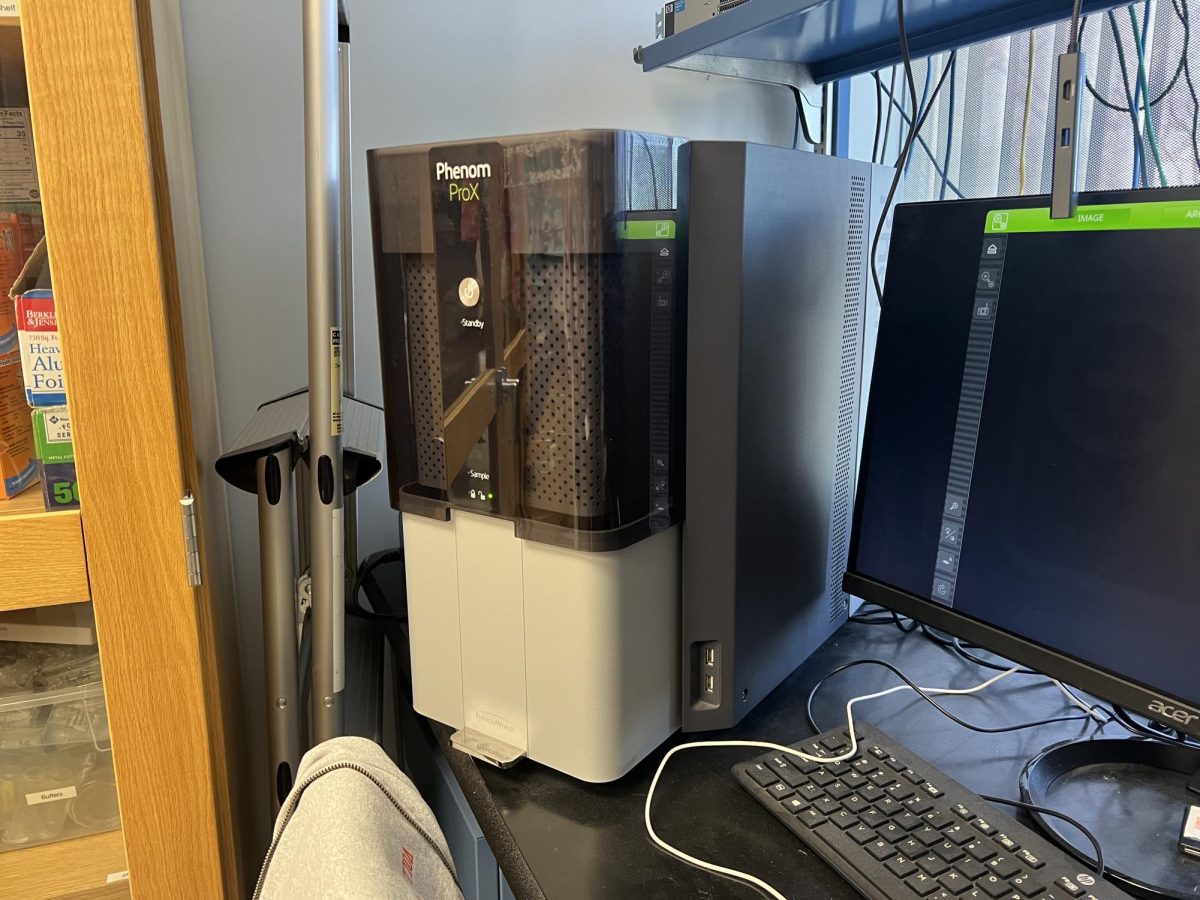Science, technology, engineering, and math fields were historically dominated by men. But that has changed, and in recent years the numbers have begun to even out, and the idea of women in STEM fields has become less stigmatized to the point that few people see it as an unusual career choice.
The roadblock was always a narrow view that women manage households and raise children, and a STEM career meant too much time away from domestic duties, with childcare at the top of the list.
“Trying to have childcare challenges resolved, I think that does later factor in, and there are definitely steps that companies can take to make a support network easier and stronger for women,” said Dr. Sarah Mortimer, an AMSA chemistry teacher and Science Bowl coach.
Because STEM fields can be very competitive, this is a big hurdle to overcome.
But stereotypes are fading, and as a STEM-focused school, AMSA has more science requirements for everyone, including a requirement for computer science. Still, while stereotypes may be disappearing, they are not gone.
“Women tend to think they’ve failed more easily,” said Padmaja Bandaru, AMSA’s computer science department chair.
Because STEM fields tend to have clear answers instead of the shades of gray in the humanities, when girls get the wrong answer, they may give up more easily. This means it is important for girls to have mentors.
“If I am projecting my insecurities I should not be a role model for girls,” Ms. Bandaru said. “But I don’t think [the gender of the role model] matters.”
AMSA has a very high representation of women in the math and science departments — in fact, the math, science, and computer science departments are all headed by women. Luba Shmidt leads math, and Christina Jagielski leads science.
“We have a very strong representation of women in science and CS positions,” Ms. Jagielski said. “If you look at who our teaching staff is, we have a really strong representation of females, and they’ve done really cool things.”
Ms. Jagielski says she focuses on encouraging girls by getting them more involved in class. If a girl who doesn’t often raise her hand does so, and there are three boys raising their hands, she will choose the girl to help empower her.
“We are pushing people to be comfortable and be confident in those classrooms now,” she said. “Be proud of yourself. Do those things and be a part of it.”







